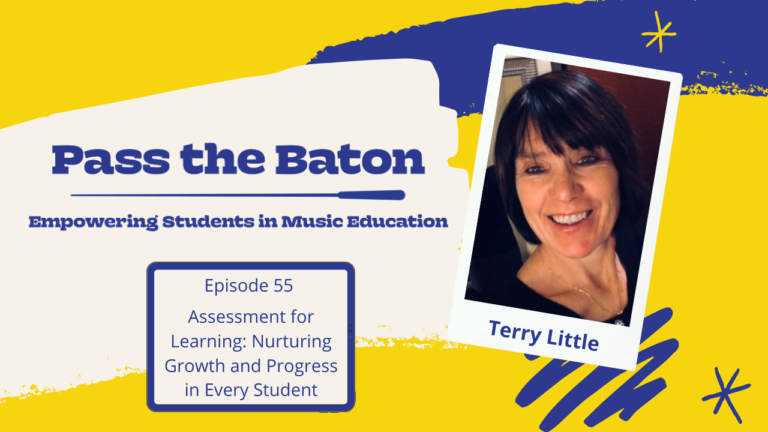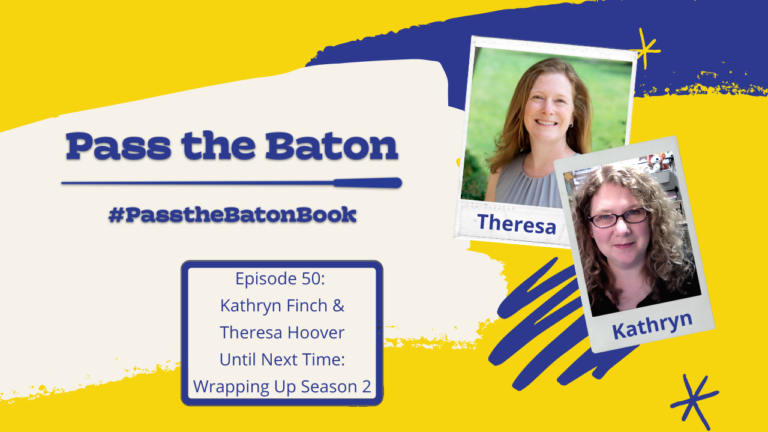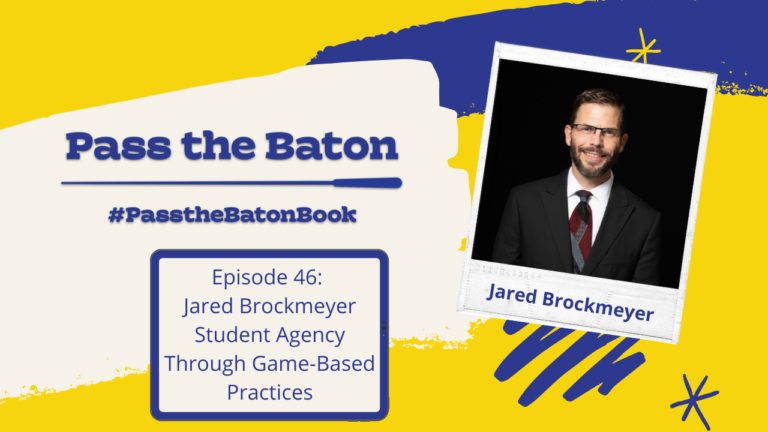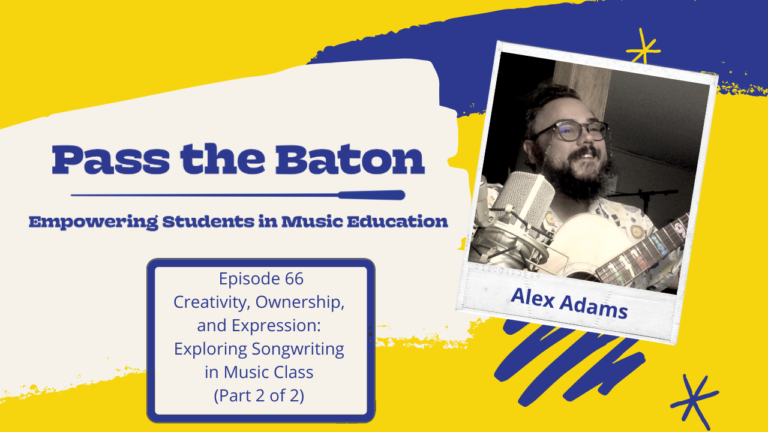This week we had the pleasure of speaking with Ashley Cuthbertson, an elementary general music teacher in Fairfax County, Virginia. Ashley has taught music in a variety of settings, teaching private lessons, school students of all ages, and even adults at a nearby university. Ashley loves working with kids and helping them connect their learning outside the classroom. One of her passions includes creating culturally responsive music classes.

What is Culturally Responsive Teaching?
Ashley explained that culturally responsive teaching is using the backgrounds and frames of mind that students already have as an asset to bring in new content, making it more relevant and meaningful for them. We can use music as a vehicle to help students understand themselves, their own identities, others who differ from them, and the world. Using students’ cultures and value systems to connect with new content helps students develop a deeper understanding.
“How do we be culturally responsive to our students? First, we have to know who they are! How do we know who they are? We have to hear their voices.”
There are a lot of connections between culturally responsive teaching and student empowerment, such as giving students voice and choice. To be culturally responsive to our students, we have to know who they are. And to do that, we have to hear their voices. In addition to learning about their likes and interests, we should ask students to share their opinions on topics and what they already know when they enter our music classrooms.
What Does This Look Like in Music Classes?
Ashley acknowledges this can be challenging, especially when music teachers work with so many students. One thing she suggests is continuing the activities from the beginning of the year, when getting to know your students. This helps us hear from every student and learn more about them. Ashley begins every class with a discussion question, both to get students thinking about the lesson content and so she can learn more about students’ thoughts, opinions, and prior knowledge.
Throughout the interview, Ashley continues to describe lessons and techniques she uses in her music classes. Some ideas she shared include:
- How her students connected to a blues unit in general music class
- The partnership she has established with students within the music classroom and why that’s become so valuable
- How students are extending their music-making outside the classroom
- Suggestions for how to get students talking in class, such as starting with lighter discussion questions, then moving to deeper, more thought-provoking questions.
Where Do We Start?
Ashley recommends teachers start by looking at themselves. Critical self-reflection and examination is necessary, taking an unclouded look at our own frames of reference. Then, we need to learn those things about our students. It’s a process, but it has to start with us.
Check out the full interview on YouTube or your favorite podcast platform to learn more about. Ashley’s work with culturally responsive pedagogy in the music classroom.
The Connection Between Culturally Responsive Teaching and Student Ownership

Learn more about Ashley and her work here:
- Website: www.ashleycuthbertson.com
- Twitter: @ACuthbertson10
- Instagram: @ACuthbertson10
Learn more about how student voice empowers music students here:
- The Connection Between SEL and Student Empowerment, with Dr. Scott Edgar
- Student Ownership Through Active Thinking, with Dr. Brian Weidner
- The Power of a Mission Statement, with Kevin Feher
- Empowering English Language Learners in Music, with Dr. Angela Ammerman
Listen to the full interview on your favorite podcast platform, or here on Anchor!





WOW!!
I listened yesterday to your podcast – the last of the year.
Theresa, YOU have such a great voice on a podcast!! (your partner does too!)
Know that I am going back to listen from the beginning this summer.
Also, the music teacher at Discovery ES just turned in his research story and I asked him if I could share it with you.
Once I hear back, I’ll connect you and him. I think he might be someone to connect with!!
I liked what he tried with his students!!
Off now to enjoy YOUR voice and learn. Good teaching in music class easily translates into good teaching in ELA classes, too.
Also, I’m around all summer. Maybe we can connect sometime via phone or zoom.
Sally